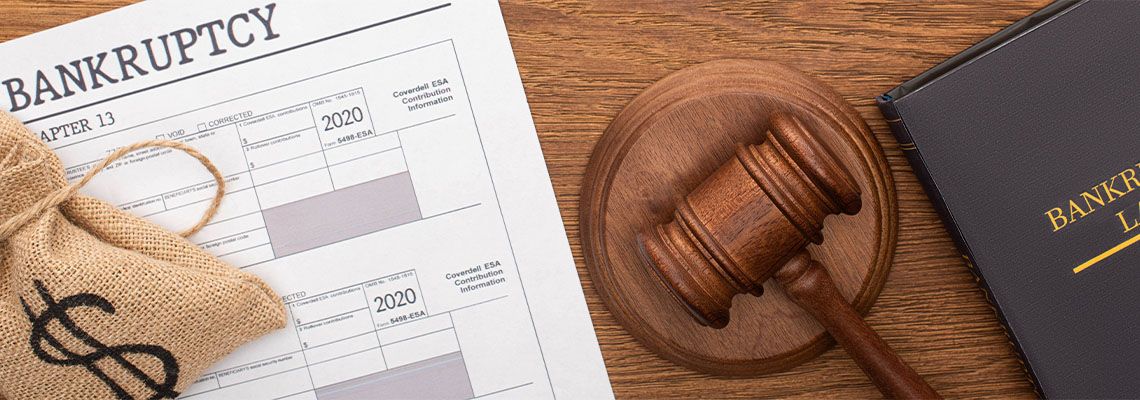
Dispelling Bankruptcy Myths
The word “bankruptcy” can send chills down people’s spines, with thoughts of losing everything and permanent financial ruin. When it comes to bankruptcy, there are many misconceptions about the process.
The truth is bankruptcy is encoded in federal and state law and provides people with a means to create a fresh financial start. In most cases, it does not mean anything near the loss of everything. In fact, a bankruptcy petitioner can keep everything while reducing and ultimately discharging unsecured credit obligations.
If you find yourself in a credit bind in or around San Mateo or San Francisco, California, contact us at the EH Law Group. We are bankruptcy attorneys who will review your financial situation, present your options, and guide you through the bankruptcy system until you have a deserved fresh start in life.
We proudly serve clients from our offices in San Francisco and San Mateo, including Santa Clara County, Oakland, Daly City, and South San Francisco, California.
How Bankruptcy Works: Myth and Reality
In 2022, California led the nation in bankruptcy filings with 31,702, which was actually way down from 2011 when the Golden State saw more than 240,000 filings. Nationwide, Chapter 7 filings outnumber Chapter 13 filings, largely because Chapter 7 is over in a matter of months, while Chapter 7 can take three to five years before the petitioner is given a discharge.
Chapter 7 is the “liquidation” option, which means that the bankruptcy court can seize some of your assets and sell them to satisfy creditors. California, however, offers generous exemptions, so you can often keep your home even when you have great equity in it. Your vehicle may also fall under the exemption limit, and if it’s leased, you can keep it as long as you make the payment.
Chapter 13 is the “wage-earners plan.” For Chapter 7, you have to pass an income means test adjusted for the size of your household. If your income is too high for Chapter 7, you will have to use Chapter 13, which uses your disposable income to pay back unsecured creditors. You can keep your house and car as long as you continue to pay for them fully.
Disposal income is what is left over after living expenses. You then use that disposable income to make monthly payments to the bankruptcy trustee assigned to you for three to five years. The trustee will pay your unsecured creditors, but obviously at a reduced level. You will be discharged at the end of the repayment period.
Common Misconceptions About Bankruptcy
Over the years, we’ve encountered the following misconceptions/myths about bankruptcy:
"Bankruptcy permanently ruins your credit": While your bankruptcy filing stays on your credit report for seven years with a Chapter 13 filing and ten years with a Chapter 7 filing, once you’re discharged you can start rebuilding your credit. In many circumstances, credit card companies will send you offerings, but watch out for annual fees and high-interest rates. You can also often purchase a car almost immediately, and a home purchase – depending on your filing type – can be accomplished in a matter of months or at most, two years.
"Bankruptcy discharges all debts": Bankruptcy does allow you to discharge almost all unsecured debts, except for spousal or child support payments, most student loans, and most past-due taxes. Secured debts are not discharged, but the automatic stay given by the bankruptcy court once you file allows you to work with your lender to restructure your loan or refinance it so you can keep your real property, such as a car or home.
"You lose all your possessions": As mentioned earlier, in a Chapter 13 filing, you can keep whatever you can pay for when it comes to real property. You can pay off your unsecured obligations through your disposable income. In a Chapter 7 filing, you may be exposed to having assets sold off to satisfy creditors, but California offers generous exemptions. As for homes, a lot depends on in which county you reside. Check with us about exemptions if you’re considering Chapter 7.
"You can only file for bankruptcy once": Not true. You can file multiple times, but there are time limits between filings. If you are discharged from Chapter 7, you have to wait eight years to file Chapter 7 again, but if you want to do Chapter 13, the wait is only four years. If you file a Chapter 13, you can file for another Chapter 13 in two years after discharge from the first one.
"Bankruptcy doesn’t stop creditor harassment": When you file for bankruptcy, your creditors, secured and unsecured, will be issued an “automatic stay,” which means they cannot contact you or try to collect on your debts while the bankruptcy process proceeds. However, secured creditors can petition to have the stay lifted, and they can repossess your car or foreclose on your home if you are behind in payments. The stay will give you time to work with your lenders to make good on everything or to refinance and move forward.
"Debt consolidation is a better option": We’ve all seen TV and online ads touting debt consolidation. What the ads don’t mention is the company working on consolidating your debts is going to ask for a nice up-front fee and then charge you a monthly maintenance amount. Chapter 13 is almost always a better option as it only touches your disposable income rather than setting an arbitrary monthly sum that you may not be able to meet.
You Can Rely on Us
Bankruptcy is a clear path to a financial fresh start. Reach out to us at the EH Law Group to discuss your personal situation and which option – Chapter 13 or Chapter 7 – is best for you. We will help you through all phases of the process until you obtain a new lease on life. We proudly serve clients in neighboring communities from our offices in San Francisco and San Mateo, California.
